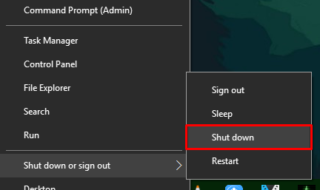Everyone is always talking about the benefits of letting your employees work from home. It can benefit your employees, but it’s also true that it can benefit your business. Employees who work from home are often more productive than employees in the office. Most people love working from home too. It means they no longer have to deal with a long commute, and they have more control over their day.
However, that doesn’t mean having employees who work from home is all good and no bad. There are some challenges too.
Here are a few you may face:
- Security
- Tech Problems
- Collaboration
- Communication
- Team Building
- Distractions
- Burnout
- Supervision
- Understanding and Expectations
- Celebrations
Contents
Security

One of the biggest problems of having a remote workforce is security. Employees focus on getting their job done, however it’s quickest, easiest, and most efficient for them. Unfortunately, that means they don’t always have an eye on how their behavior can affect the security of their information or company information.
It’s easier than ever to allow employees to work remotely, but you also have to work harder to set up an IT infrastructure with sound security. That means:
- Using a Zero Trust approach to security
- Installing software on all work devices that can recognize possible threats—not just known ones
- Implementing endpoint detection and response that can integrate IAM with MDM
- Choosing vendors that are just as dedicated to security as you are
Tech Problems
Tech problems come up in the office all the time. Sometimes it’s something serious that requires a member of the IT department to take a look, but sometimes it isn’t. Whether it’s figuring out a new program or trying to get the mouse to work properly, employees face a number of tech challenges that can be easier to solve in the office because all they have to do is lean over and ask a friend in a nearby cubicle for help.
Getting tech support as a remote worker is more difficult, but resolving problems quickly is the key to ensuring everyone uses their time wisely. That means supporting your team.
Don’t leave tech issues up to your employees. Instead, make sure they know who to ask and how to get the help they need when they need it.
For example, create a list of issues that should be sent to IT, along with the best way to contact the IT department. For less serious technological problems, you can implement a buddy system. Whenever someone has a tech question, they can ask their buddy first. If they both can’t solve the problem, they can contact you or contact the IT department.
Collaboration
Collaborating with others is always a bit of a challenge, but it can be especially challenging when team members are required to work together when they aren’t even in the same room. Getting the right collaboration software is key.
Do your research to narrow down your options, as there are quite a few! Think about how your team works best, and get their input regarding what kind of collaboration software they want to use.
Then, don’t be afraid to switch it up if you try one and your team doesn’t like it. Although it takes a long time to learn a new piece of software, it’s well-worth it in the long run to learn two or three different platforms if it means you’ll all eventually settle on one that enables everyone to be their most productive selves.
Communication
Collaboration can be a huge challenge, but so can regular old communication. How should employees communicate with each other when it doesn’t directly relate to a project? How are they supposed to get ahold of you when they have a question or an issue?
It’s a good idea to talk with your team about the best ways to communicate with each other. That might mean implementing one way for everyone to chat with each other, like using an instant messaging app. It could also mean talking about everyone’s preferences and communicating with them the way they prefer. For example, supervisors may prefer email, but a coworker may prefer that you send them an instant message real quick.
Team Building
It’s hard to feel like you’re part of a team when you’re sitting by yourself at home. That can cause a lot of problems when you rely on your employees to work together to solve problems and complete projects.
The best way to build your team is to get together in-person every once in a while, if everyone lives nearby. Have everyone come into the office once a week or invite everyone to the bowling alley on a Monday afternoon so they can build real-life connections.
If getting together in-person isn’t an option, there are plenty of remote team building activities you can do together! A few ideas include:
- Create a virtual water cooler
- Create a virtual book club or talk about the latest episode of a TV show
- Host “ask me anything” sessions via videoconference
- Encourage employees to participate in company initiatives and charity fundraisers
- Have employees take turns hosting remote, one-on-one lunch-and-learns
Distractions
Distractions can cause productivity to tank. That’s true in the office, but it’s especially true at home. Although the bulk of the responsibility falls to your employee, there are things you can do to help them minimize distractions as they work.
For example, if you have employees who work at home with kids, create a new policy that helps cover childcare costs for parents to encourage them to send them to daycare. Create incentives, like extra days off or bonuses, for getting a certain number of tasks done, or reimburse employees for buying office furniture, like a new ergonomic chair.
Burnout
It may sound great if you have employees who are willing to work 12-hour days or put in extra time on the weekends, but ultimately, you’re doing your company a disservice. Burnt out employees are easily distractable and take more sick days. Not to mention, their attitude can bring the whole team down.
You should encourage your employees to take time off before they burn out. That means giving them plenty of time off that they can actually take and helping them divvy up their workload before they leave. However, the best way to encourage everyone to take time off is to lead by example.
That means taking your vacation time, and it means building in plenty of automatic days off into your calendar. It may seem like you’ll get less work done, but when employees clock in feeling rested and refreshed after having some time off, they will ultimately get more and better work done.
Supervision
One thing that many managers of remote employees hate is the fact that supervising employees is nearly impossible. You can’t just drop by someone’s cubicle or peek your head around your office door to see how everyone is doing.
If you’re struggling with the supervision aspect of having a remote workforce, it’s important to realize that micromanaging your employees is one of the biggest mistakes managers make. If you hired the right people, you should feel confident in their ability to take the ball and run with it. If you have employees who regularly drop the ball, the solution isn’t to find ways to micromanage them from afar. Instead, it might be time to help them find a different role in the company or replace them altogether.
Understanding and Expectations
Expectations are important in the workplace, especially when employees can’t just drop by your office and ask you to clarify something they don’t understand. Without clear expectations and an open door that invites employees to send any questions they have your way, they will start to make assumptions as they work, and those assumptions may result in subpar work, angry customers, or a data breach.
Create employee handbooks and make sure they are easily accessible. Have an open door policy where employees know you are happy to answer questions so they are never afraid to ask.
Celebrations
All work and no play makes life dull for everyone. That’s why workplace celebrations are important! From holidays to landing a big client, you should make time to celebrate with your employees, even if they work remotely.
If you can all get together at a restaurant, at a ballgame, or on the golf course, you should! If you aren’t all together in the same city, consider hosting a virtual celebration. Send snacks, wine, sweets, or even dinner to everyone’s door and host a video conferencing party where everyone can chat and hang out with each other during work hours.
Your employees are likely to appreciate working from home. It makes their life better, and it can be better for your workplace too. However, that doesn’t mean it doesn’t come with challenges. Be aware of the problems that can arise so you can create a game plan that ensures your employees work just as efficiently and comfortably at home as they would in the office.



